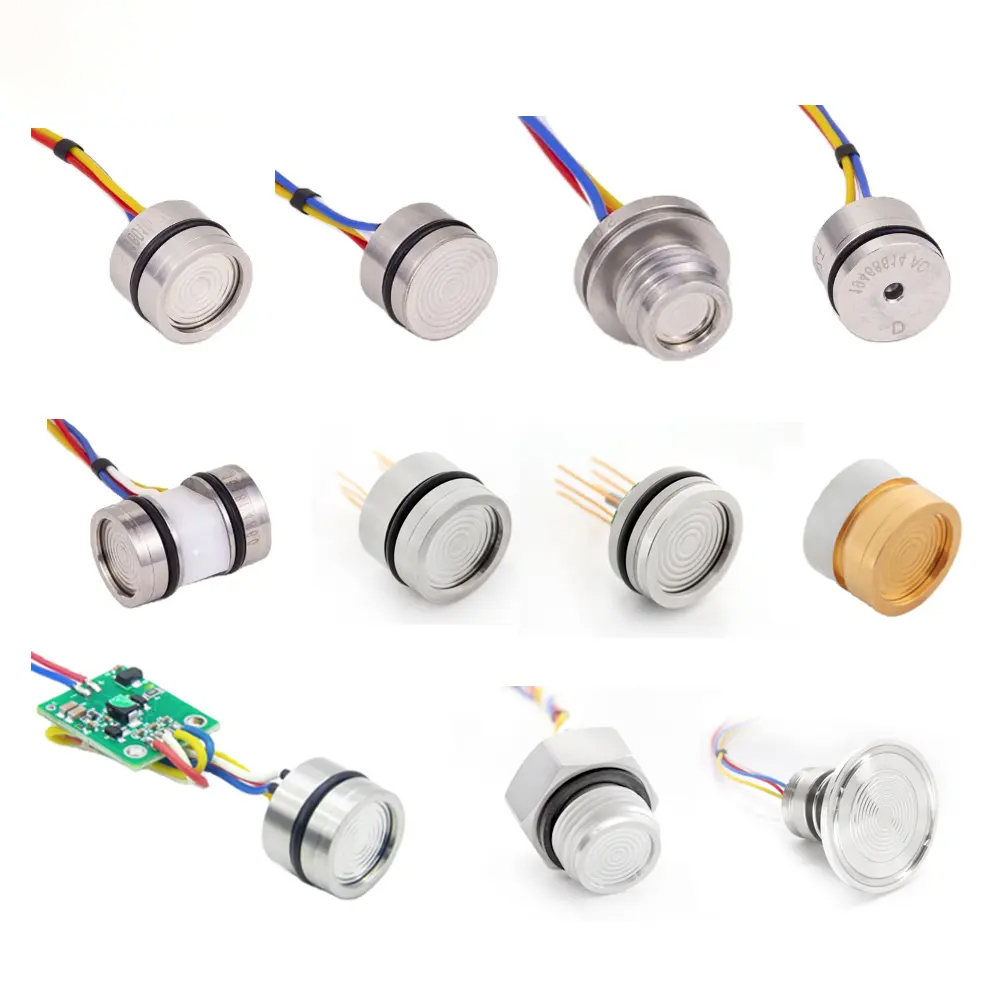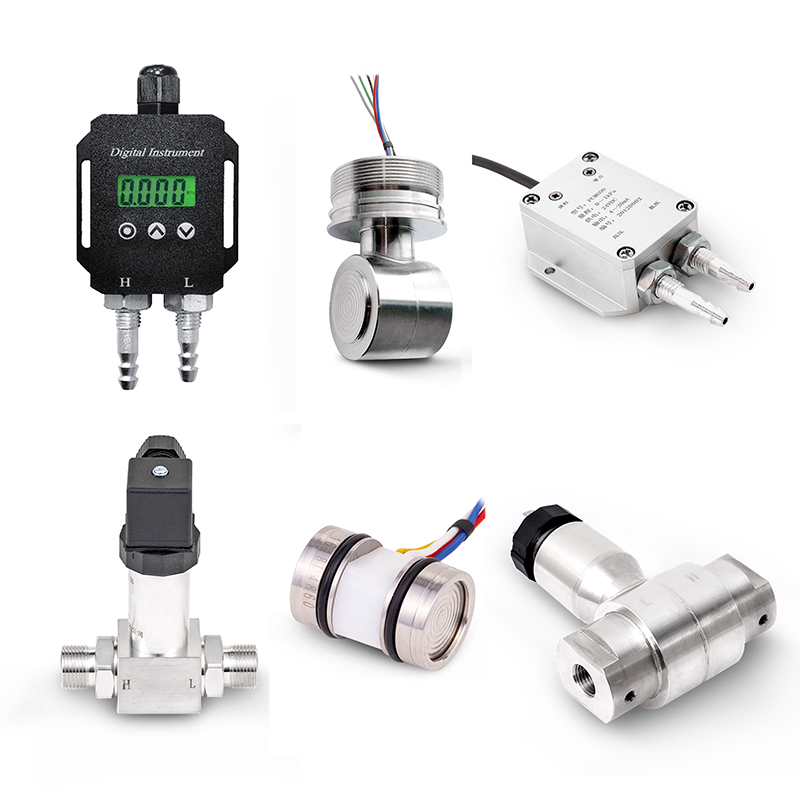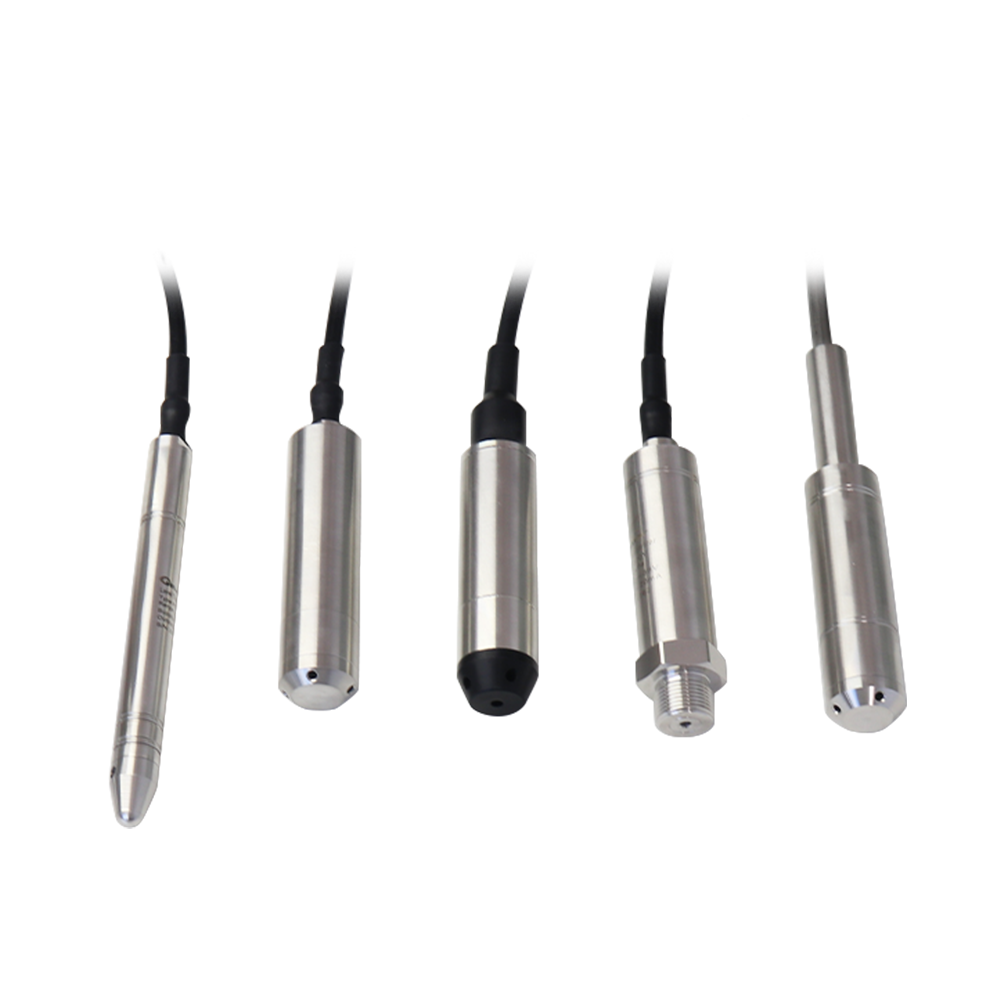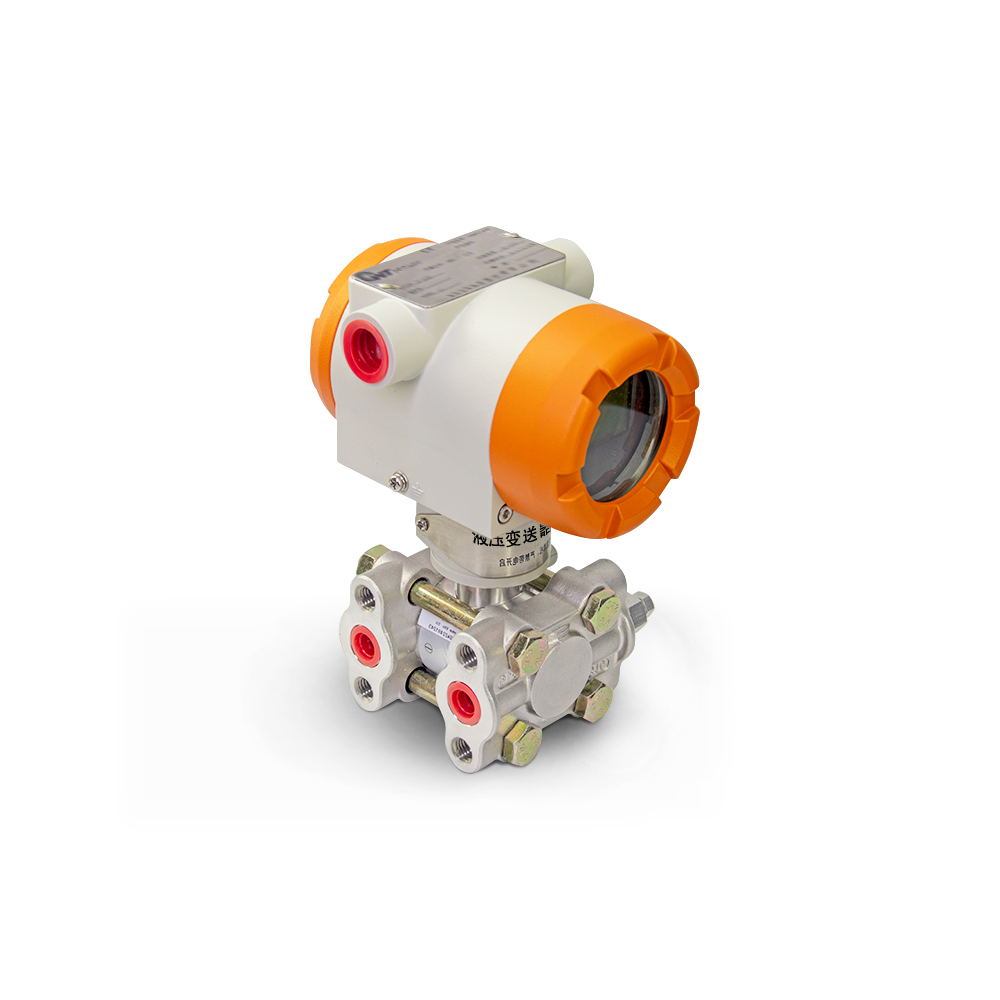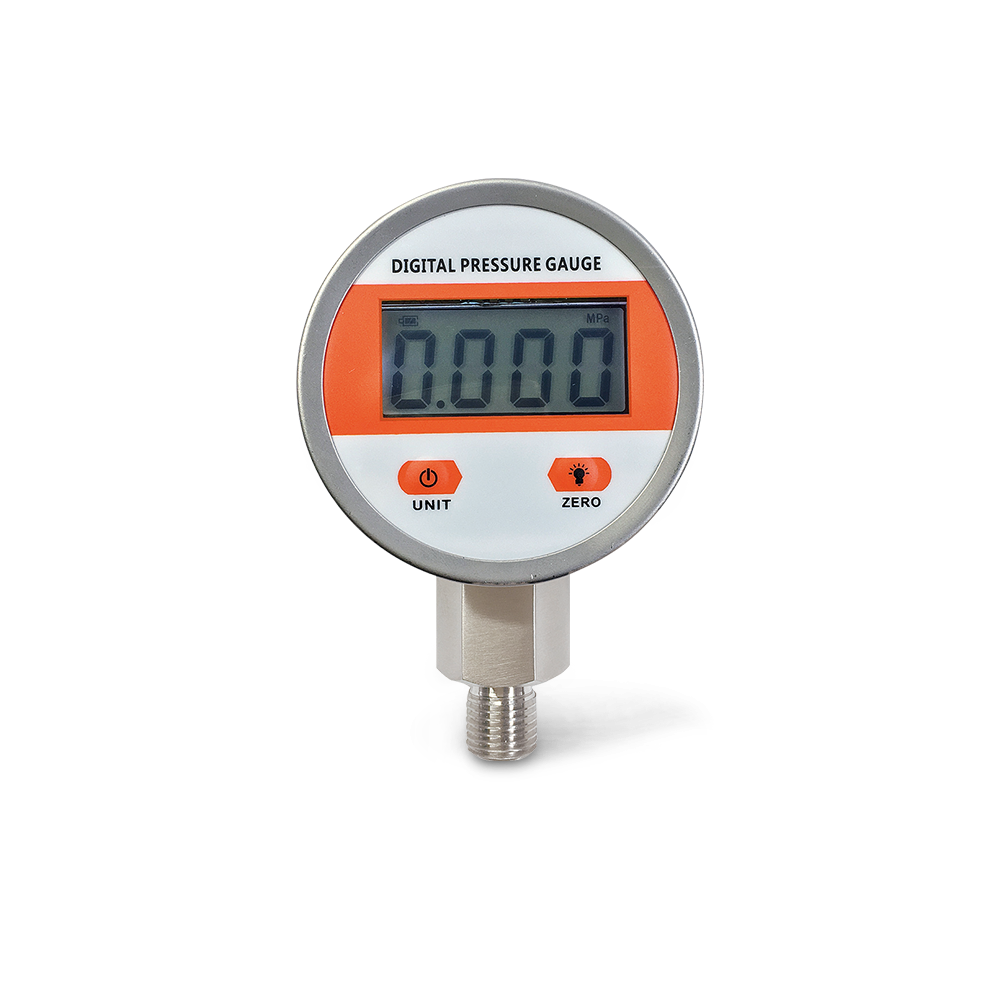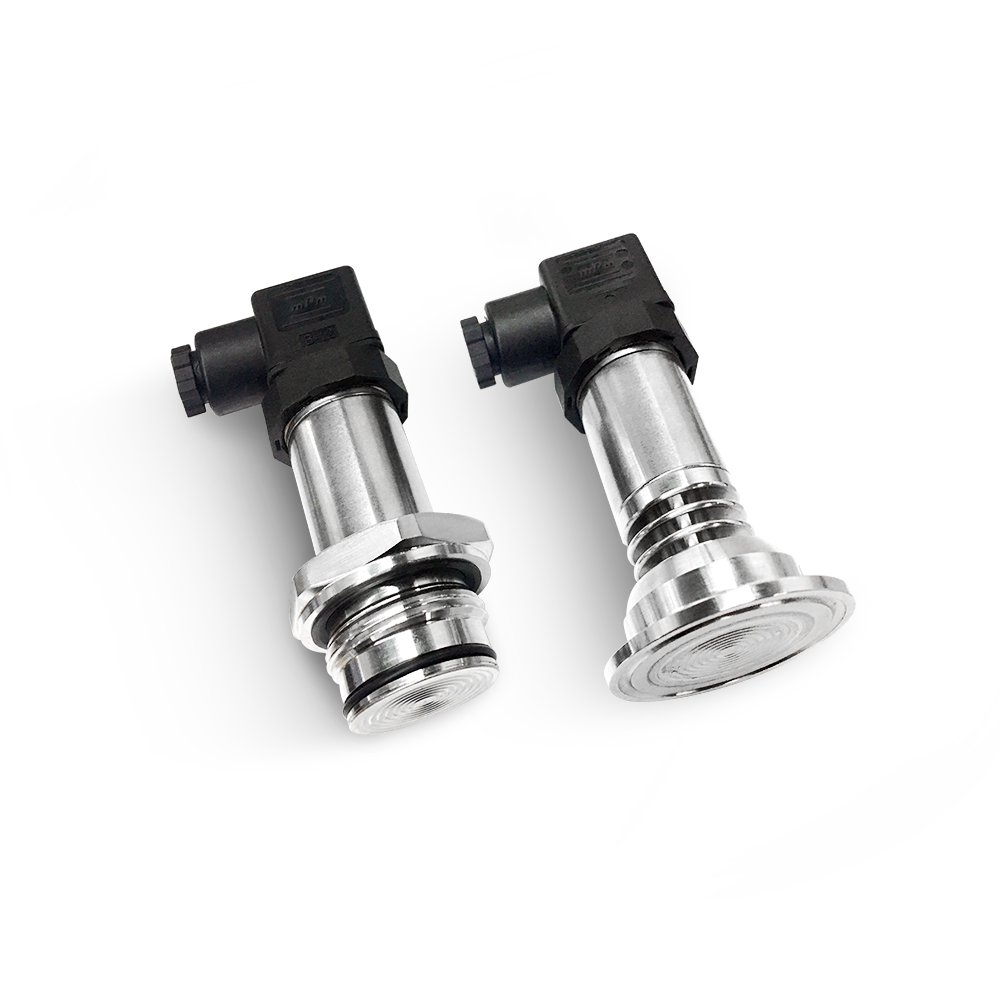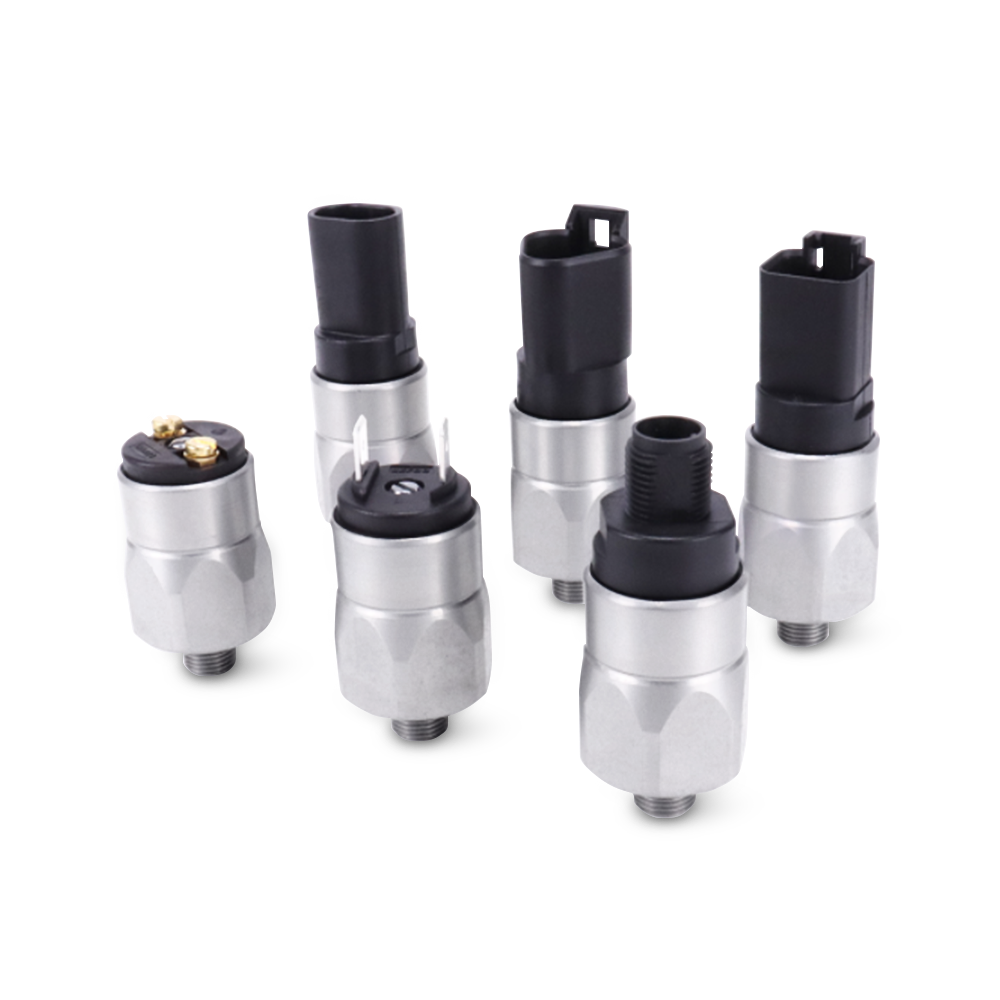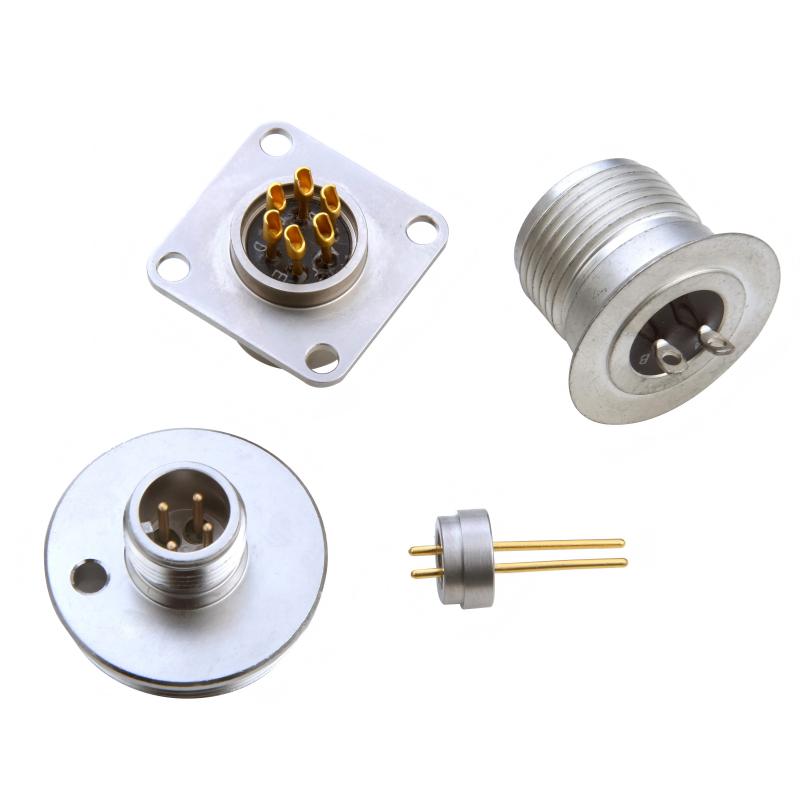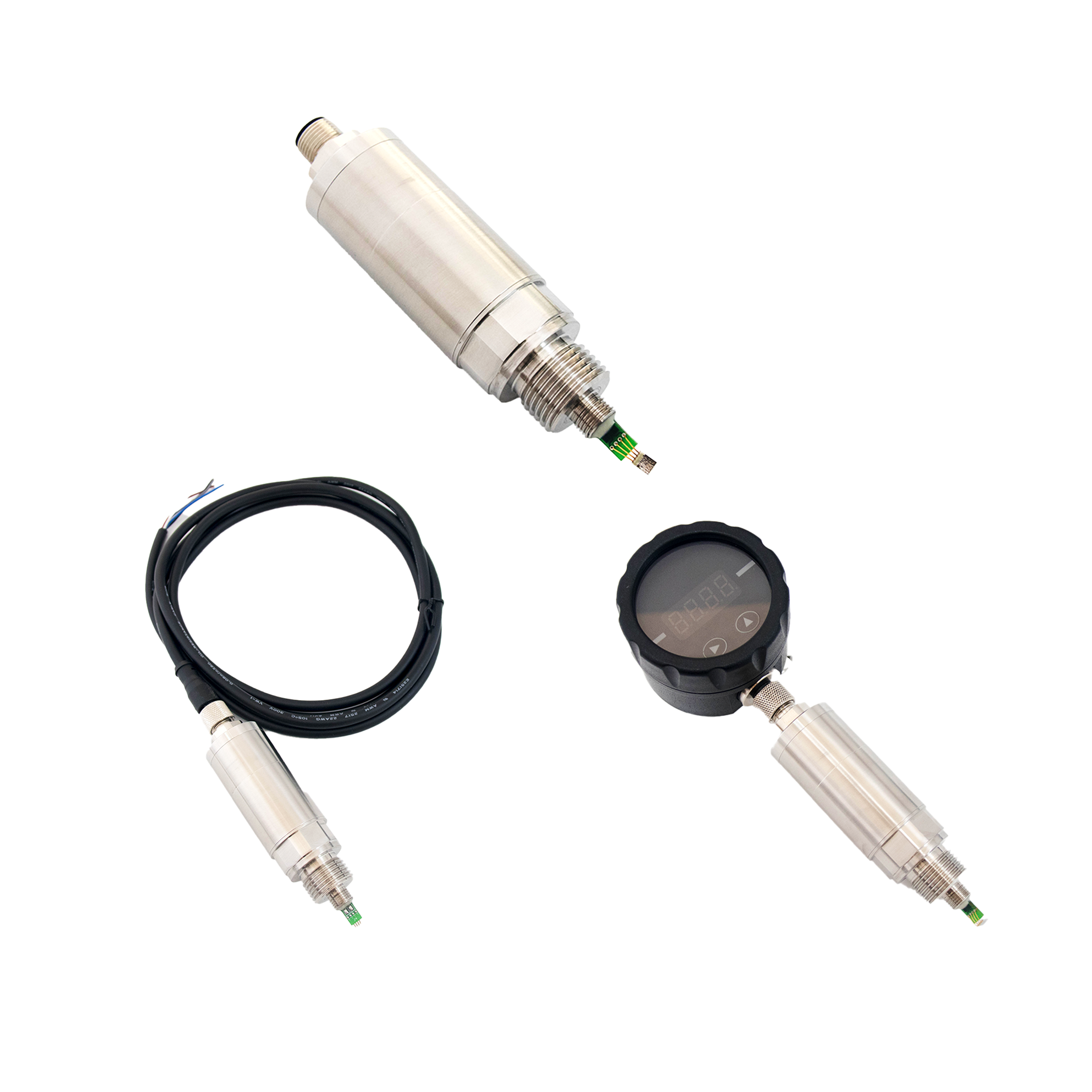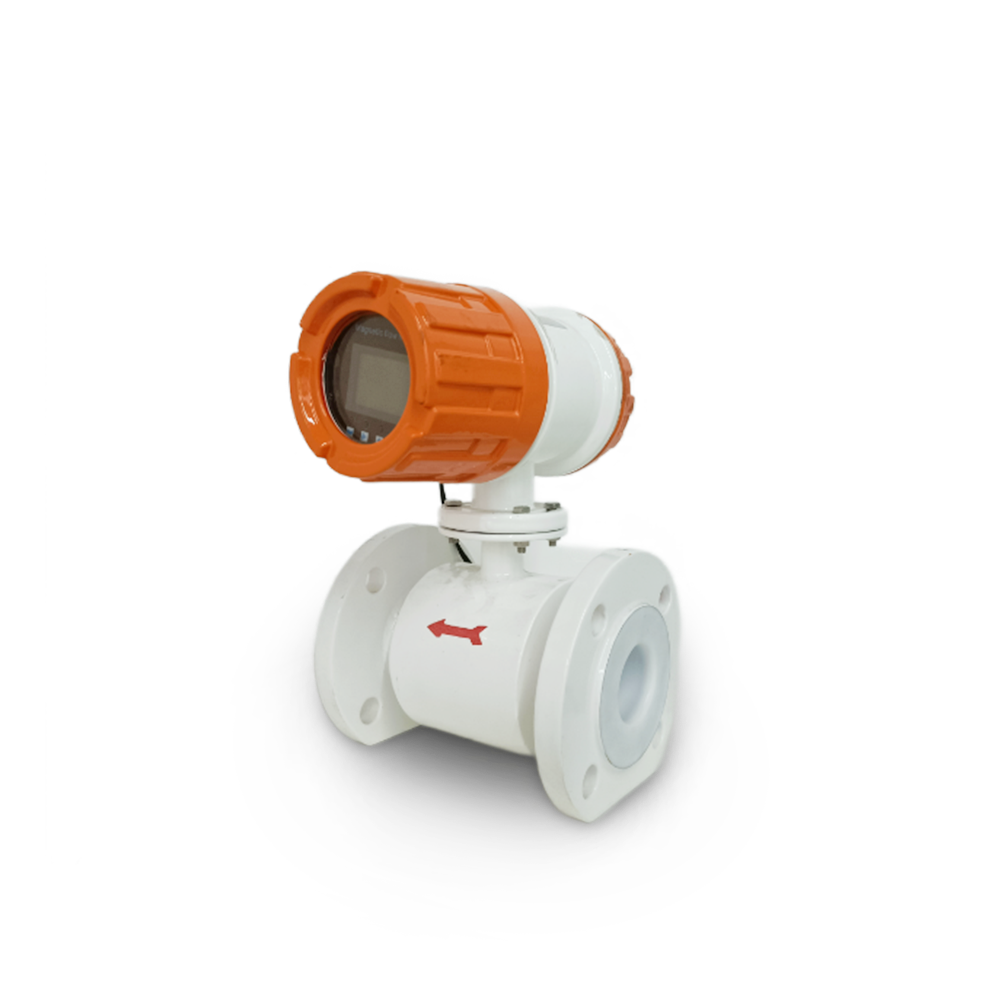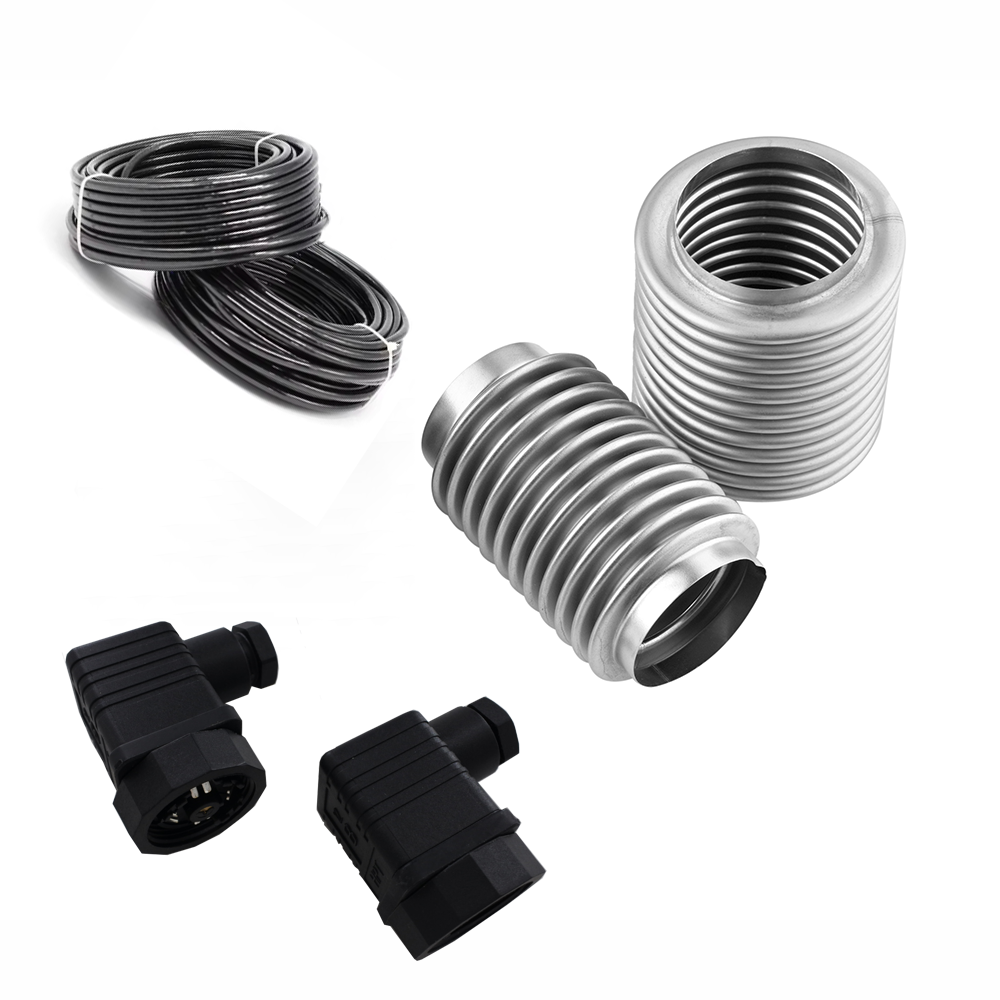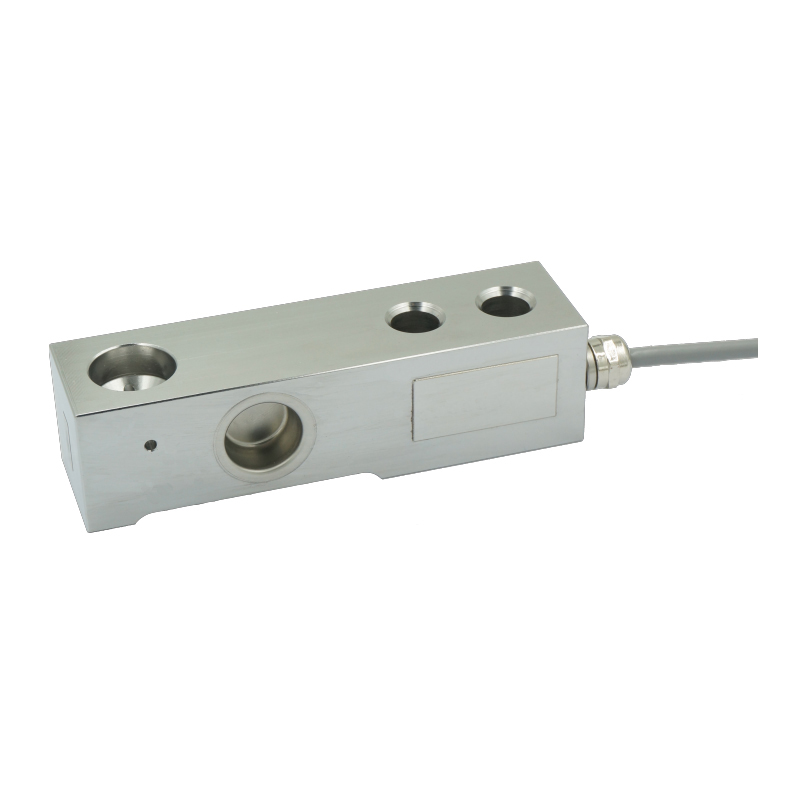Application of Pressure Transmitters in the Chilling Industry: Enhancing Low-Temperature Wafer Etching with PCM300T
From: Issued date 2025.08.18 Back
The chilling industry plays a critical role in high-tech manufacturing, especially in semiconductor processing, where precise control of temperature, pressure, and flow ensures product quality and operational safety. One of the key technologies in this field is low-temperature etching, a process widely used in wafer slicing and semiconductor fabrication. To achieve stable etching conditions, refrigerants such as HFE (hydrofluoroether) are used due to their unique thermophysical properties, chemical stability, and environmental safety compared to older refrigerants.
In these systems, pressure monitoring is indispensable. The PCM300T High Temperature Pressure Transmitter, with its robust stainless-steel structure, high-temperature resistance, and reliable 4–20 mA signal output, offers an ideal solution for monitoring refrigerant pressure during chilling and etching processes. This article explores the function of pressure transmitters in the chilling industry, focusing on HFE refrigerant applications, and explains how the PCM300T contributes to process stability, equipment protection, and efficiency improvement.

The Role of Pressure Control in the Chilling Industry
Chilling systems are designed to maintain stable and uniform low temperatures for sensitive industrial processes. In wafer slicing and semiconductor etching, precise control of temperature is critical because even small deviations can lead to defects in wafer surfaces or inconsistency in etching depth.
Pressure transmitters are employed to:
Monitor refrigerant circulation – Ensuring HFE refrigerant remains within the desired pressure range.
Prevent overpressure and leakage – Protecting system components from excessive pressure.
Enable feedback control – Providing real-time data to chilling system controllers for accurate process adjustments.
Ensure system safety and reliability – Allowing early detection of anomalies, such as loss of refrigerant charge or abnormal compressor operation.
Thus, pressure transmitters are not merely instruments for measurement; they are integral to the entire process control loop.
Refrigerant Medium: Hydrofluoroether (HFE)
The use of HFE refrigerants is particularly prominent in wafer slicing and low-temperature etching applications. HFEs provide several distinct advantages:
Chemical Stability: HFEs are resistant to decomposition under plasma or high-energy conditions, making them reliable for semiconductor etching processes.
Environmental Benefits: Compared with older refrigerants like CFCs or HCFCs, HFEs have lower global warming potential (GWP) and are non-ozone-depleting.
Compatibility with Materials: HFEs are non-corrosive to most metals and compatible with common elastomers used in cooling and etching equipment.
Heat Transfer Efficiency: Their high dielectric strength and efficient thermal properties make them suitable for low-temperature applications in wafer processing.
Because of these characteristics, monitoring HFE refrigerant pressure accurately is vital. The refrigerant must remain in a stable pressure window—too low, and the cooling effect is insufficient; too high, and the system risks component damage or leaks.
The PCM300T High Temperature Pressure Transmitter, with its 0–200 kPa measurement range, is tailored to meet these operational requirements. Its sensitivity in low-pressure ranges allows precise monitoring of refrigerant behavior, ensuring consistent etching quality.
Application in Wafer Slicing and Low-Temperature Etching
1. Wafer Slicing Process
In semiconductor manufacturing, wafers are sliced from silicon ingots using precision cutting techniques. This process requires controlled cooling to prevent thermal damage, stress fractures, or warping. Chilling systems that use HFE refrigerants provide the necessary cooling to maintain wafer integrity.
Pressure transmitters like the PCM300T help ensure:
Stable Refrigerant Pressure – Preventing fluctuations that could affect cooling uniformity.
Accurate Load Matching – Adjusting system output based on wafer slicing workload.
Energy Efficiency – Avoiding over-compression or underperformance in chilling equipment.
2. Low-Temperature Etching
Etching is used to pattern semiconductor wafers with microscopic precision. Low-temperature etching relies on stable conditions of refrigerant-cooled chambers to maintain uniform plasma and etching depth. Here, the role of a pressure transmitter is to:
Maintain Refrigerant Pressure Balance – Allowing stable chamber cooling during etching.
Support Process Repeatability – Ensuring every wafer undergoes the same conditions for consistent product quality.
Detect Abnormal Pressure Conditions – Such as refrigerant leakage, compressor malfunction, or system blockages.
In both wafer slicing and etching, the 4–20 mA output of the PCM300T integrates seamlessly with industrial PLCs and process controllers, enabling real-time monitoring and automated control of chilling system parameters.
PCM300T Product Overview
The PCM300T High Temperature Pressure Transmitter is designed specifically for demanding industrial environments, where both high temperatures and high precision are required.
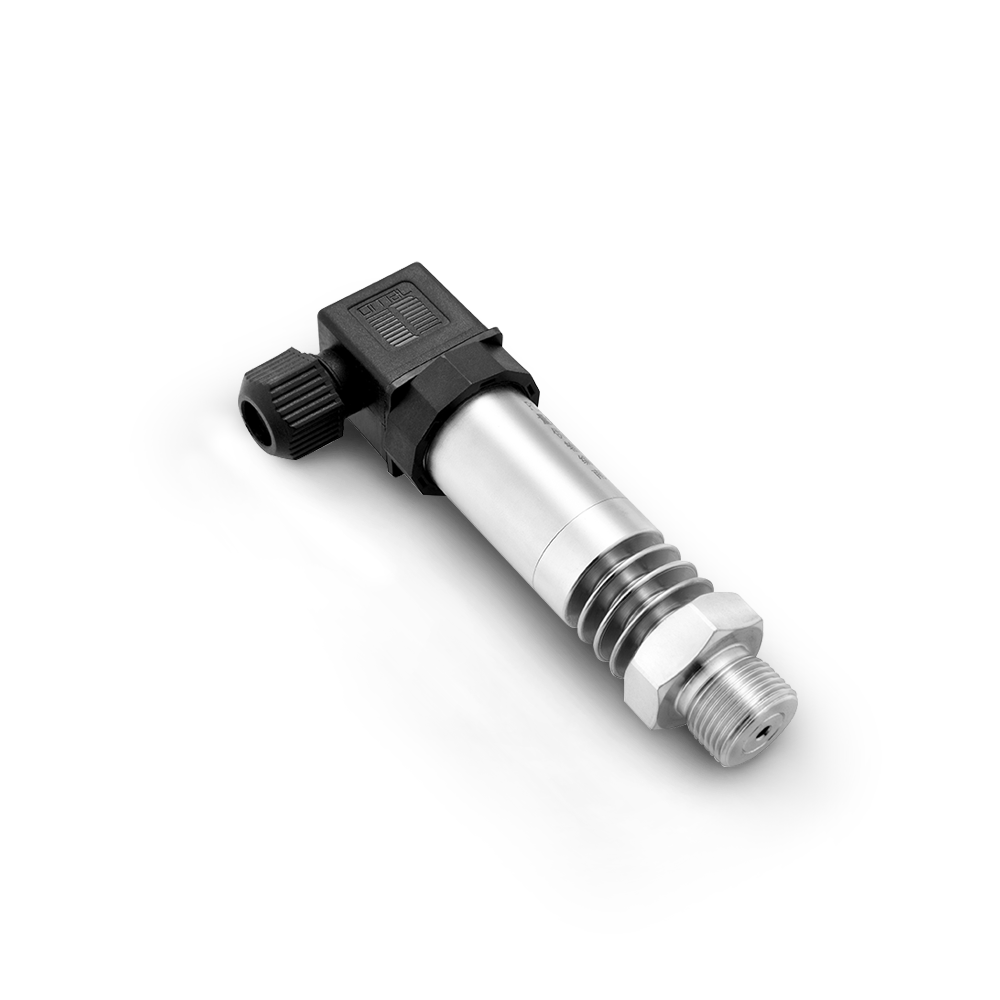
Key Features:
SS316L Isolation Diaphragm: Corrosion-resistant and suitable for direct contact with refrigerants such as HFE.
High Temperature Resistant Chip: Capable of maintaining stability in a wide range of medium temperatures.
Stainless Steel Housing with Heat Dissipation Design: Protects internal electronics from thermal stress.
High Pressure Response Frequency: Ensures rapid reaction to changes in refrigerant flow or pressure.
Robust Mechanical Design: Withstands vibration, shock, and corrosive environments common in industrial chilling equipment.
Wide Pressure Ranges Available: The 0–200 kPa range is particularly suitable for chilling and etching processes where low-pressure precision is essential.
Output Signal: 4–20 mA: A standard industrial signal compatible with most automation systems.
Benefits of PCM300T in the Chilling Industry
1. Enhanced Process Reliability
By continuously monitoring HFE refrigerant pressure, the PCM300T helps maintain stable chilling performance, reducing the risk of etching inconsistencies or wafer slicing defects.
2. Protection of Equipment
Overpressure or underpressure events can damage compressors, valves, and chilling pipelines. The PCM300T provides precise data to trigger alarms or automatic shutdowns, extending equipment lifespan.
3. Improved Efficiency
Real-time pressure data allows chilling systems to operate more efficiently, avoiding excessive energy consumption while ensuring optimal cooling performance.
4. Long-Term Stability
The transmitter’s strong anti-interference capability and durable stainless-steel housing guarantee long-term reliability, even in demanding semiconductor manufacturing environments.
5. Compatibility with Advanced Refrigerants
HFEs are becoming increasingly common in the semiconductor industry. The PCM300T’s corrosion-resistant diaphragm and temperature-resistant chip make it fully compatible with HFE refrigerants.
Integration into Industrial Control Systems
The 4–20 mA analog output of the PCM300T ensures compatibility with programmable logic controllers (PLCs), distributed control systems (DCS), and SCADA platforms. This allows for:
Real-Time Monitoring: Operators can visualize refrigerant pressure on control panels.
Data Logging and Analysis: Long-term pressure data trends help optimize system performance.
Automated Feedback Loops: System controllers can adjust compressor speed, refrigerant valves, or flow rates based on pressure readings.
This integration makes the PCM300T an essential component in Industry 4.0-driven chilling systems, where predictive maintenance and smart process control are becoming standard.
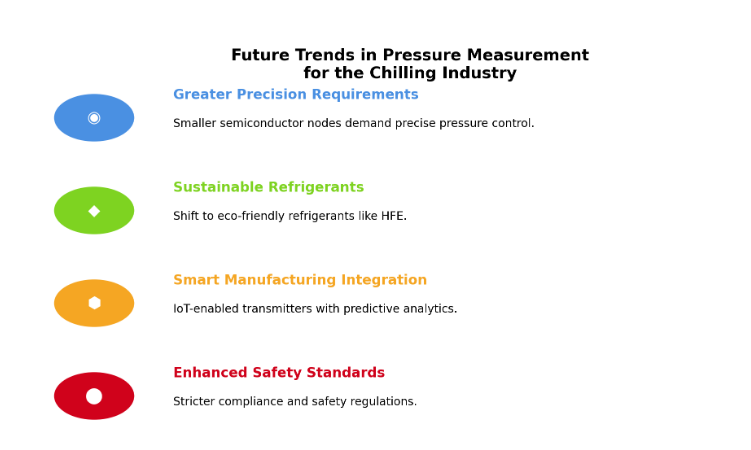
In the chilling industry, where precision, stability, and reliability are paramount, pressure transmitters play an essential role. For semiconductor wafer slicing and low-temperature etching processes that rely on HFE refrigerants, maintaining accurate pressure control ensures product quality, equipment safety, and operational efficiency.
The PCM300T High Temperature Pressure Transmitter stands out as an optimal solution, offering corrosion resistance, high-temperature tolerance, fast response, and reliable 4–20 mA output. With its ability to integrate seamlessly into industrial automation systems, it supports both current process control needs and future developments in semiconductor manufacturing.
As the chilling industry continues to adopt advanced refrigerants and increasingly precise processes, the PCM300T provides a durable and future-ready solution for pressure monitoring in critical low-temperature applications.

